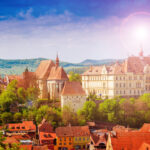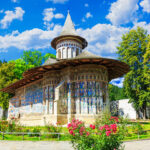The historic center of Sighisoara, a UNESCO World Heritage Site, is a beautiful example of a medieval fortified town. Founded by German craftsmen and merchants in the 12th century, Sighisoara played an important role in the region’s history. Today, visitors can stroll through the winding streets and admire the colorful houses, ancient walls, and towers that are still standing.
Nestled in the heart of Transylvania, this picturesque town is like stepping into a fairy tale, complete with cobbled streets, colorful houses, and a history that’s as rich as it is intriguing.
The Place
Sighișoara is one of the best-preserved medieval towns in Europe. With its fortified walls, watchtowers, and ornate churches, it’s no wonder the town is a UNESCO World Heritage site. As you stroll through the town’s historic center, you’ll be greeted by the iconic Clock Tower, which offers panoramic views of the surrounding landscape. Don’t miss the chance to wander around the Citadel Square, where each building tells a story of its own, painted in vibrant hues of blues, yellows, and greens.
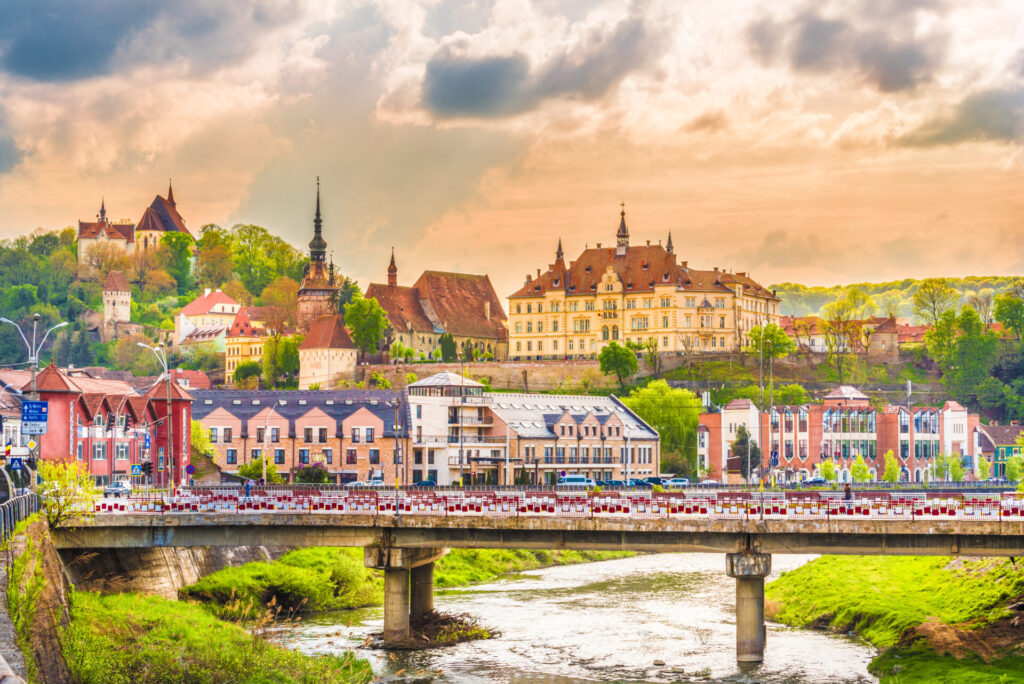
The History
Founded by German craftsmen and merchants, known as the Transylvanian Saxons, Sighișoara has a storied past that dates back to the 12th century. The town played a significant role as a trading and craft center in the region. Its fortifications, consisting of a double wall and nine towers, each managed by a different craft guild, stand as a testament to its strategic importance and the skills of its inhabitants.
But perhaps the most famous historical figure associated with Sighișoara is Vlad III, commonly known as Vlad the Impaler or Dracula. Born in a house right here in this town, he would go on to inspire legends and tales that have captivated the world.
Speaking of Dracula, while Bram Stoker’s fictional vampire is what most people think of, the real Vlad the Impaler was a prince known for his brutal, albeit effective, methods of dealing with his enemies. The house where he was born is now a restaurant and museum, and it’s a must-visit for anyone keen on delving into the blend of fact and fiction that surrounds this enigmatic figure.
Beyond Dracula, Sighișoara is steeped in local myths and legends. Whispered tales speak of secret tunnels beneath the citadel, used by the townsfolk to escape during sieges. There’s also the legend of the “Scholar’s Stairs,” a covered wooden staircase that leads to the Church on the Hill. It’s said that these stairs, originally 300 steps but now reduced to 175, were covered to ensure schoolchildren could climb them in all weather conditions without slipping.
So, if you’re yearning for a journey that combines medieval charm, intriguing history, and a touch of the supernatural, Sighișoara is the place to be. As you wander its streets, you’ll feel the weight of centuries past and the whispers of legends that refuse to die.
A full one-day plan to explore the best of Sighișoara
Morning:
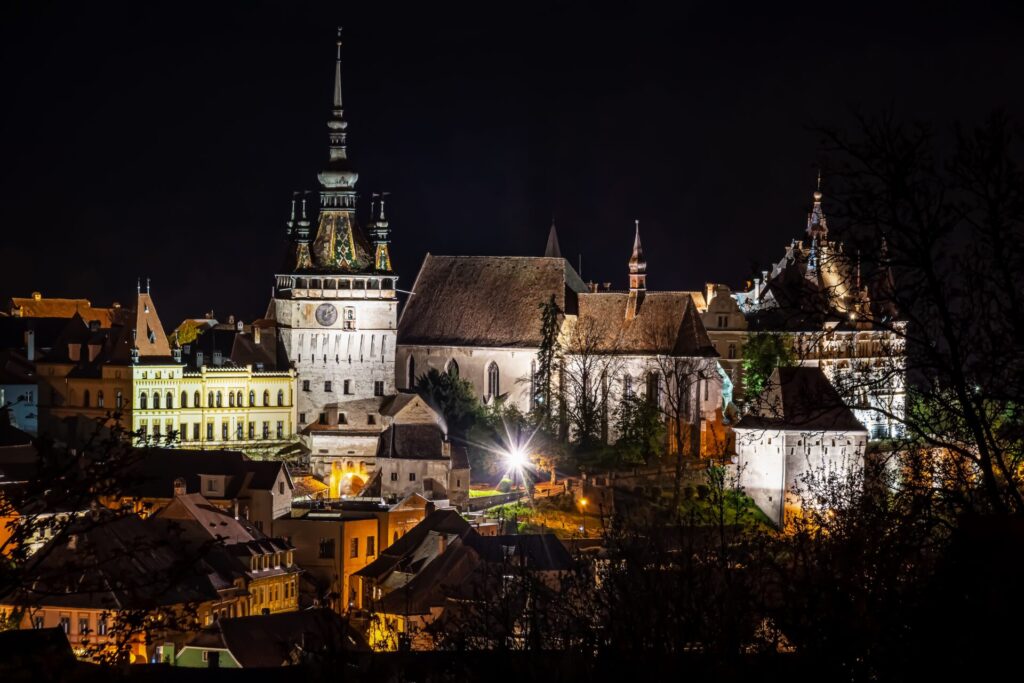
1. The Clock Tower (Turnul cu Ceas):
Start your day by visiting this iconic landmark. Climb to the top for a panoramic view of the town and the surrounding Transylvanian landscape. Inside, there’s a museum spread over several floors, detailing the town’s history.
2. Vlad Dracul House:
Just a short walk from the Clock Tower, visit the birthplace of Vlad the Impaler, the inspiration behind Bram Stoker’s Dracula. Today, the ground floor houses a restaurant, but you can see the room where Vlad was born and learn a bit about his tumultuous life.
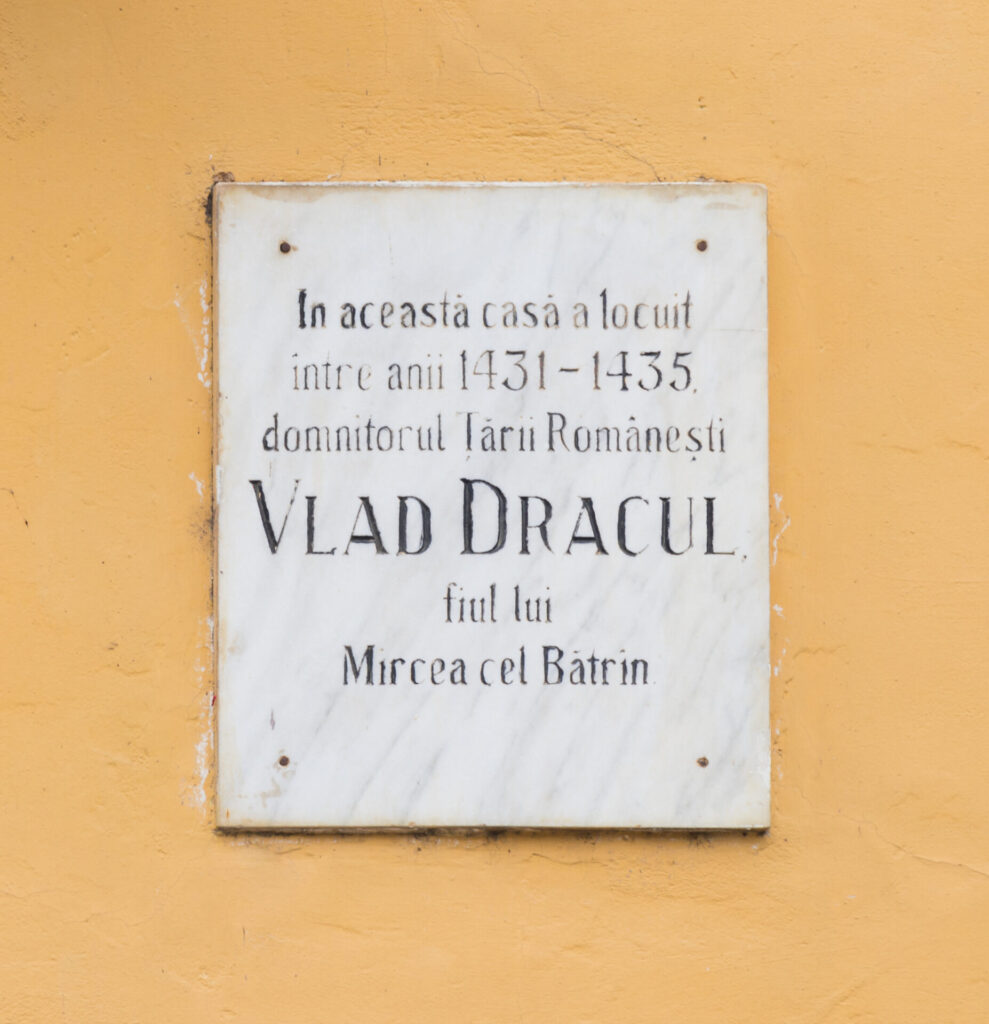
3. The Church of the Dominican Monastery:
Located near the main square, this church boasts a mix of Baroque and Gothic architecture. Inside, you’ll find a beautiful altar and some impressive frescoes.
Lunch:
Head to one of the local restaurants in the Citadel Square. Many establishments offer traditional Romanian dishes. Try “mămăligă” (a type of polenta) or “sarmale” (cabbage rolls) for an authentic taste of the region.
Afternoon:
4. The Scholars’ Stairs (Scara Școlarilor):
Climb this covered wooden staircase, which was built to protect schoolchildren from the elements. It leads to the Church on the Hill and the adjacent Sighișoara Cemetery.
5. Church on the Hill (Biserica din Deal):
This Gothic church is one of the most impressive in Sighișoara. Inside, you’ll find beautiful frescoes and a serene atmosphere. The adjacent cemetery offers a peaceful walk with old tombstones, many belonging to the town’s Saxon ancestors.

6. The Citadel’s Towers:
Sighișoara’s citadel has nine towers, each once belonging to a different craft guild. While you might not have time to explore all of them, the Tinsmiths’ Tower and the Ropemakers’ Tower are particularly noteworthy.
Evening: 7. Stroll the Citadel Streets:
As the sun sets, the citadel takes on a magical glow. Wander the cobbled streets, soak in the medieval ambiance, and maybe pick up some souvenirs from local artisans.
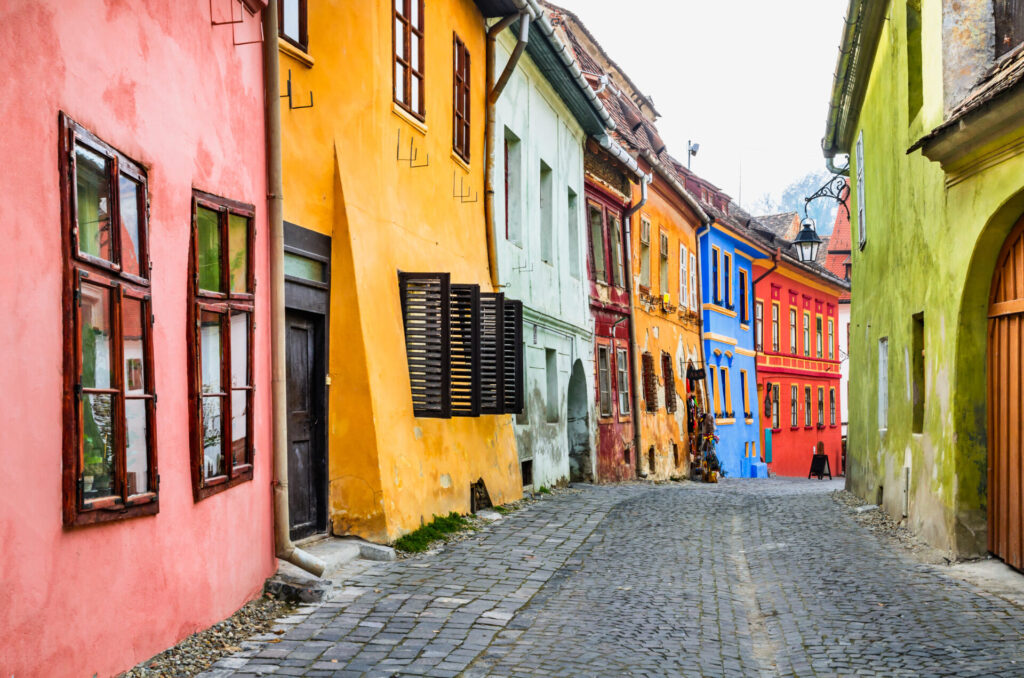
8. Dinner in the Citadel:
Choose one of the citadel’s cozy restaurants for dinner. Many places offer outdoor seating in the summer, allowing you to dine while enjoying views of the illuminated towers and walls.
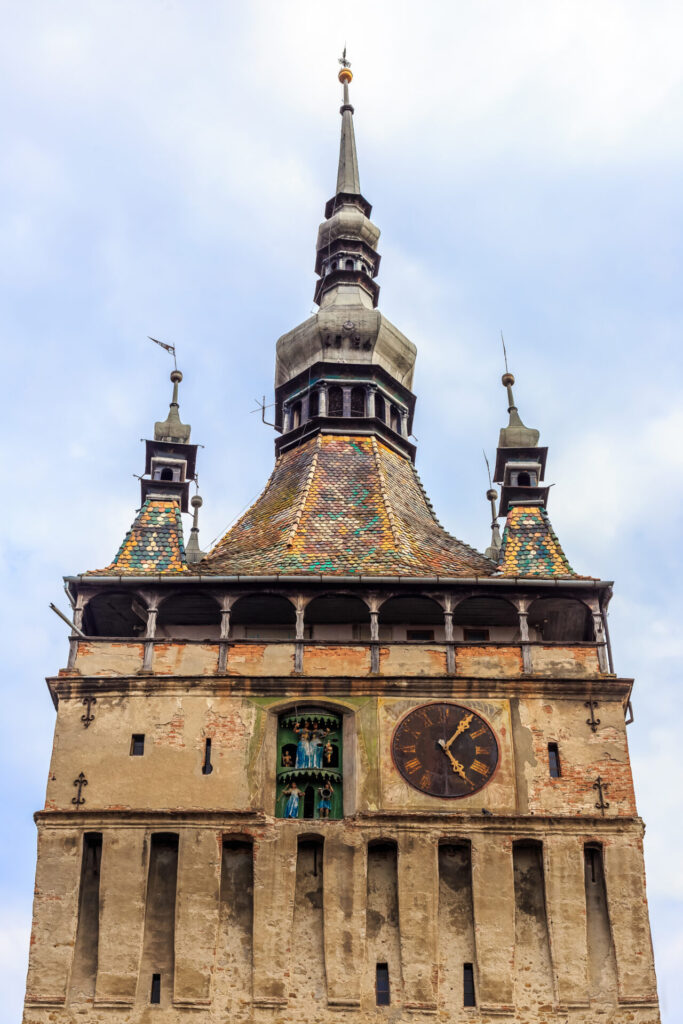
Nightcap:
If you’re up for it, end your day with a drink at one of the local bars or cafes. It’s a great way to mingle with locals and fellow travelers, sharing stories of your Transylvanian adventures.
Remember, while this guide gives you a packed day, Sighișoara is best enjoyed at a leisurely pace. So, take your time, savor the moments, and let the town’s medieval charm sweep you off your feet. As Rick Steves would remind you, “Enjoy every experience to its fullest!”
Journeying to Sighișoara: A Traveler’s Guide
This medieval gem in the heart of Transylvania beckons with its cobbled streets and rich history. But how does one get to this UNESCO World Heritage site? Let’s chart the course!
1. By Air:
- Târgu Mureș Airport (TGM): This is the closest airport to Sighișoara, located about 60 km away. It handles both domestic and a few international flights. Once you land, you can take a taxi, rent a car, or catch a bus to Sighișoara.
2. By Train:

- The Romanian railway network is quite extensive and reliable. Sighișoara has its own train station, making it accessible from major cities like Bucharest, Cluj-Napoca, and Brașov. The journey offers scenic views of the Romanian countryside, especially if you’re coming from the Carpathian region.
3. By Road:
- From Bucharest: The drive is about 4-5 hours. Take the E60 road towards Brașov, then continue on the same road towards Târgu Mureș, and you’ll find signs directing you to Sighișoara.
- From Cluj-Napoca: It’s a 2.5 to 3-hour drive. Take the E60 road towards Târgu Mureș, and from there, continue towards Sighișoara.
- From Brașov: A shorter drive of about 2 hours. Follow the E60 road towards Târgu Mureș, and you’ll soon reach Sighișoara.
4. Buses and Coaches:
- Several companies operate bus services that connect Sighișoara with major Romanian cities. The bus station in Sighișoara is located close to the train station, making it convenient if you’re considering multiple transport options.
Tips for the Road:
- Romanian roads, especially in the countryside, can be a mix of well-maintained highways and rustic roads. Always check the route and road conditions, especially if traveling in winter.
- While in Sighișoara, the town is best explored on foot. The historic center is compact, and most attractions are within walking distance of each other.
So, whether you’re arriving by plane, train, or automobile, the journey to Sighișoara is part of the adventure. As you approach the town and its iconic Clock Tower comes into view, you’ll know you’re in for a treat.
Are you tired of traveling to the same old European destinations like France, Italy, or Spain? If you’re looking for a unique and diverse travel experience, consider the hidden gems of the A Country A Month series, waiting to be explored. The author is an avid photographer and traveler. His favorite travel companion is his vintage leather-bound journal, in which he sketches and writes about his adventures.








